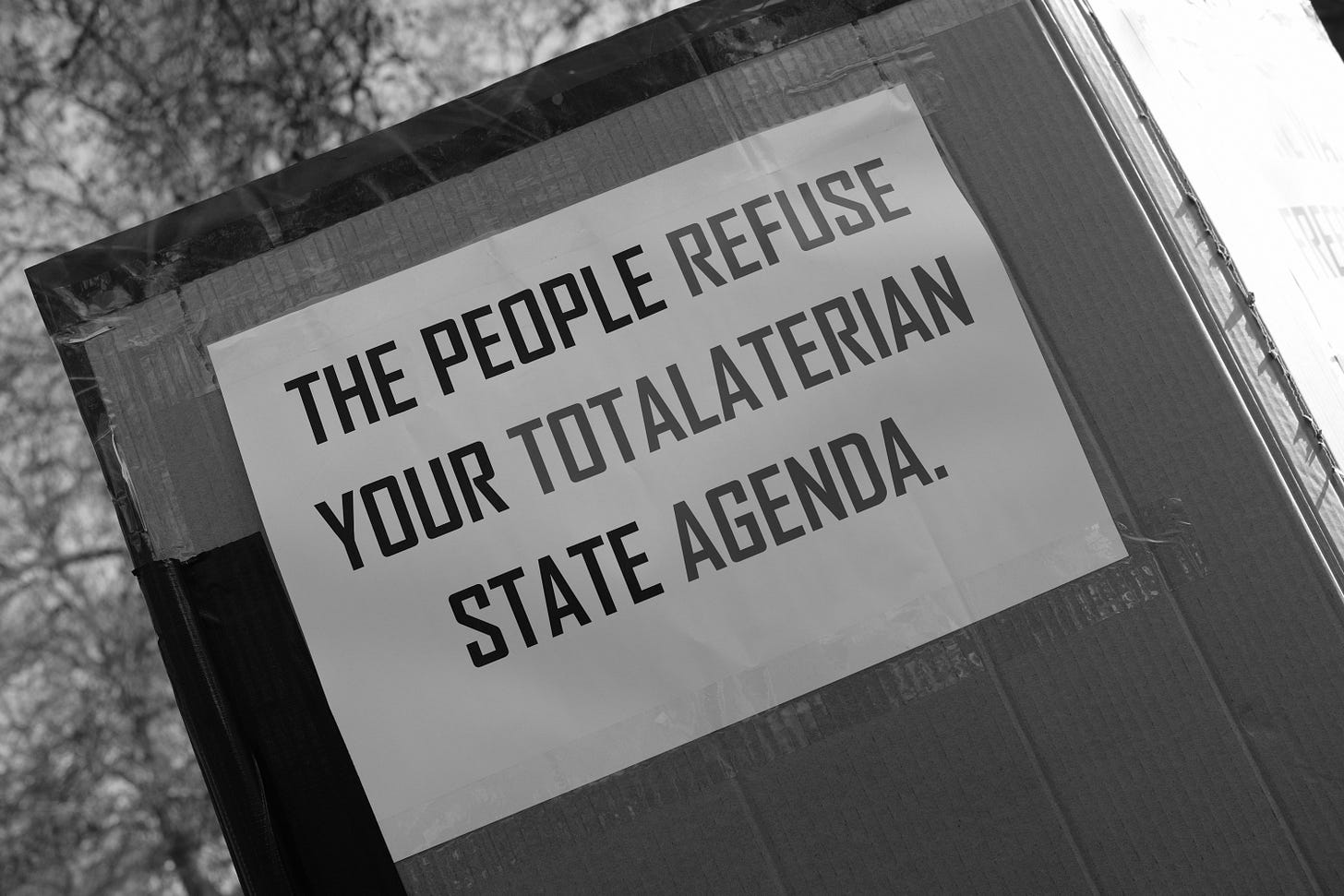Ghost Orders: when testimony becomes remedy
An update on my "ghost court" legal battle that exposes a deeper principle of justice
In August I raised about £5,000 from readers to advance several legal actions in what I’ve called the “ghost court” saga. The work has continued quietly behind the scenes, even if the paperwork itself has not yet been lodged. That funding has sustained me through the unseen loops of correspondence, drafting, and evidential preparation. This piece is therefore both a status update and a meditation on the wider justice activism many of us are pursuing—in courts, schools, hospitals, and beyond.
Two fronts are now active — one challenging the ghost orders being enforced without any sealed judgment, and the other exposing the ghost court that never lawfully existed.
First, HMCTS Enforcement keep demanding payment of a fine despite never having served a sealed court order. I have asked repeatedly for one, and they refuse even to acknowledge the request. No official seems willing to personally stand behind the Justices’ Clerks’ Society doctrine that “court names have no legal meaning.” I have formally put HMCTS on notice of fraud, asserting that “North and West Cumbria Magistrates’ Court (1752)” is not constituted under the Courts Act 2003. They dare not send me a sealed order—doing so would assign personal liability to whoever affixes their name.
I have also received no order from the 1st September Carlisle hearing on Section 142 (to reopen the case). Again, I have asked; again, silence. The administrative machinery appears frozen—perhaps under instruction not to hand me further evidence of misfeasance. Yet that very refusal is itself proof of maladministration. These are not abstruse debates over metaphysical court names; they are basic failures of due process. I have today filed a fresh complaint with HMCTS to crystallise their record of non-engagement, since the previous one from August was ignored.
Second, the Government Legal Department. I served a pre-action protocol letter challenging their claim that Section 123 of the Magistrates’ Courts Act 1980 acts as an “omni-cure,” permitting them to print any fictional tribunal name they please—even one that does not exist. Parliament did not empower HMCTS to conjure new courts in a relational database. Their initial brush-off falsely asserted that my May Judicial Review was rejected (it was never even issued), flipping the narrative from “the State is blocking remedy” into “Martin is re-litigating.”
Subsequent exchanges have the GLD explicitly defending the Justices’ Clerks’ Society paper—an advisory memo, not law. In doing so they elevate administrative opinion above statute. We are now in another cycle of rebuttal and review: each time they respond at the limit of their deadline, and each time—with AI assistance—a precise, calm reply goes back within hours. I remain the author, setting parameters, breaking the work into steps, and supervising multiple rounds of refinement; Grok and ChatGPT handle expression and research.
I’m not publishing the correspondence: the issues are edging toward sub judice, and there’s a question of professional courtesy. HMCTS are surely aware I write these essays for a large audience. There is a difference between documenting abuse when treated as “just another member of the public” and broadcasting sensitive high-level exchanges. It is poor form to litigate in public or to humiliate individuals inside the system. HMCTS had one simple duty: to declare “this is law” by naming the lawful tribunal on its instruments. They muffed it—likely millions of times. Coming to terms with that existential blunder will take them time.
While I oppose the GLD’s defensive posture, I sense genuine dignity in their letters—unlike the Justices’ Clerks’ Society note, which derides “ghost-court” challenges as pseudo-legal while itself trafficking in legal superstition. Court names matter. They are not decorative surplus; nor can a “clerical slip” cure a void. That staff refuse to operationally stand behind this radical doctrine says it all. As HMCTS Enforcement attempt to railroad me into payment, their correspondence all but begs the High Court to step in and take the pain away.
By application of my Absolute Zero Protocol, rejecting any State unlawfulness and exploring every remedy systematically, I now have a spectacular record of maladministration, summarised here for clarity:
Invented court identity — The prosecution was initiated in the name of a tribunal that has no lawful existence, and no authority has corrected or justified this.
Unauthenticated process documents — The Single Justice Procedure notice and summons were issued without signature, seal, or judicial authentication.
No adjudicative order served — Following the hearing, no sealed or authenticated conviction or fine order has ever been produced or served, despite repeated written requests.
Statutory appeals and reopening applications ignored — Motions under the Magistrates’ Courts Act 1980 to reopen the case or state a case for the High Court were neither acknowledged nor ruled upon.
Judicial Review filing refused for issue — A fully compliant JR claim was rejected on administrative grounds, blocking access to the supervisory jurisdiction of the High Court.
Misrepresentation of case status — The Government Legal Department later misdescribed the unissued JR as “refused at permission stage.”
Pre-Action Protocol letters unanswered — Multiple PAP notices to both HMCTS and the CPS received no substantive reply within the statutory 14-day period.
Unlawful enforcement activity — HMCTS Enforcement pursued collection and committal threats without any served order, while appeals and complaints remained pending.
Enforcement resumed after agreement to pause — Having confirmed enforcement would be suspended pending review, HMCTS then re-issued a Further Steps Notice.
Misrouting of legal correspondence — Legally significant notices were diverted to local administrators instead of being escalated to the Government Legal Department.
Suppression of jurisdictional objections — Internal communications confirm that jurisdictional challenges were “saved to file” rather than passed to a legal adviser.
Refusal to release court records — Requests for the hearing audio, clerk’s notes, and judgment record were acknowledged but never fulfilled.
Freedom-of-information and data-access obstruction — FOI and DSAR requests were delayed or refused, particularly those seeking proof of the court’s legality or of service.
Ignored fraud and defect notices — Formal notices alleging procedural fraud were logged but not addressed; enforcement continued regardless.
Inaccurate and evasive official responses — Written replies from HMCTS and GLD contained factual errors and sidestepped the central jurisdictional issue.
Complaints unresolved — Internal HMCTS complaints were acknowledged but not concluded within published timelines.
Administrative overreach — Operational managers made quasi-judicial decisions, including determinations to continue enforcement, outside their lawful competence.
Taken together, these form a closed loop of institutional failure. Every lawful remedy—appeal, review, complaint, data access, and oversight—has been neutralised in practice. It is a textbook case of systemic breach of due process and administrative collapse.
Which brings me to the deeper point. I am not trying to “win” by dragging this into the High Court or beyond. Whether the supervisory court doubles down on the HMCTS doctrine or steps back from the cliff edge makes no difference. They may declare these actions legal, but without the kernel of truth they are never lawful. My purpose is not to collapse the system or to reform it. It is to expose it.
I hear many campaigners lament the absence of remedy in the system. They spend countless hours comparing notes on how to achieve lawful ends within a corrupted legal order. That instinct is not wrong — the harms are real, and the yearning for relief is deeply human. But true change does not begin with cleverer strategies inside the machine. It begins when everyone — the public, the administrators, the journalists, the legislators, and the judges — finally see the system for what it is.
We overcome, as the scripture says, “by the blood of the Lamb and by the word of their testimony.” Not through competition or domination within the system, but by exposing its moral operations to the light.
That is why I devote as much energy to documenting this battle as to fighting it. The record is the action. Just as with council tax summonses that appear to come from a court but are in truth issued by the council, once you recognise the deception, the spell breaks. No lawful process can begin in fraud — not even if the High Court blesses the misdescription.
Law, in its essence, is the repair of the world’s coherence — the restoration of the Logos, the Word, the Truth. On that ground, I cannot “lose,” because remedy was never the point. So long as I have my laptop and an internet connection, I can continue to bear witness to the State’s procedural abuse.
The real revolution is not me taking “ghost courts” to a senior judge.
It is you reading this — and telling others.




Thank you for this update. I appreciate the approach you are taking in all of this: you are not "in it to win it" so much as you are wanting to bring people to an awareness of what they are doing so that they can see the wrong in it and encouraging them to repent (go in the opposite direction from the one they are on) and make things right, for their own benefit and those of others. Your 1 Corinthians 13:4-8 love for others shows through. Much respect !
I'm far more of a micro rather than macro thinker. That said, it's difficult to imagine that there's any more than 1 of 2 possible eventualities to your (and others', myself included) course of action.
1. The system continues to double down at every juncture leading, slowly but inevitably, to a truly totalitarian regime in which enough of the armed services is prepared to maintain control of the populace.
2. When enough people (likely between 1% and 6%) see clearly the corruption you and others are spelling out to them, there will be an uprising and civil unrest in which enough of the armed services maintains a conscience.